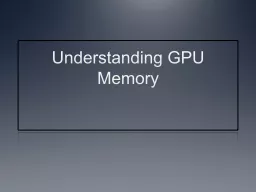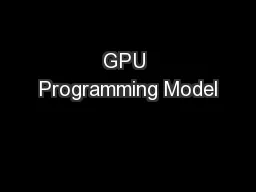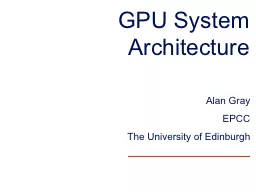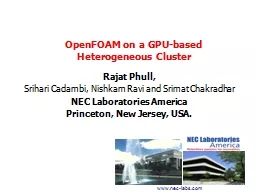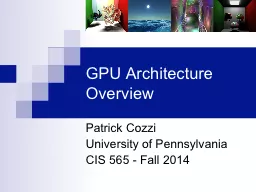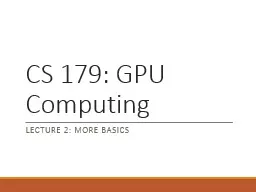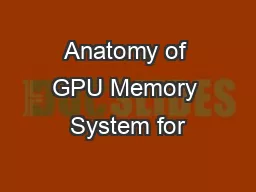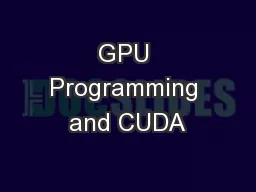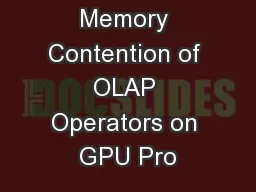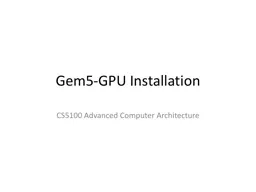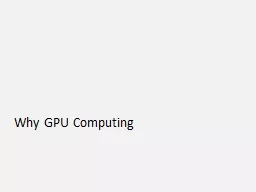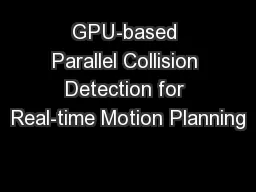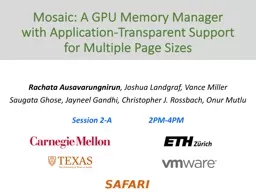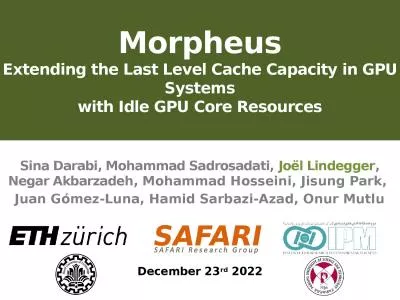PPT-Understanding GPU Memory
Author : conchita-marotz | Published Date : 2016-03-03
Instructor Notes This lecture begins with an example of how a widememory bus is utilized in GPUs The impact of memory coalescing and memory bank conflicts are also
Presentation Embed Code
Download Presentation
Download Presentation The PPT/PDF document "Understanding GPU Memory" is the property of its rightful owner. Permission is granted to download and print the materials on this website for personal, non-commercial use only, and to display it on your personal computer provided you do not modify the materials and that you retain all copyright notices contained in the materials. By downloading content from our website, you accept the terms of this agreement.
Understanding GPU Memory: Transcript
Download Rules Of Document
"Understanding GPU Memory"The content belongs to its owner. You may download and print it for personal use, without modification, and keep all copyright notices. By downloading, you agree to these terms.
Related Documents

